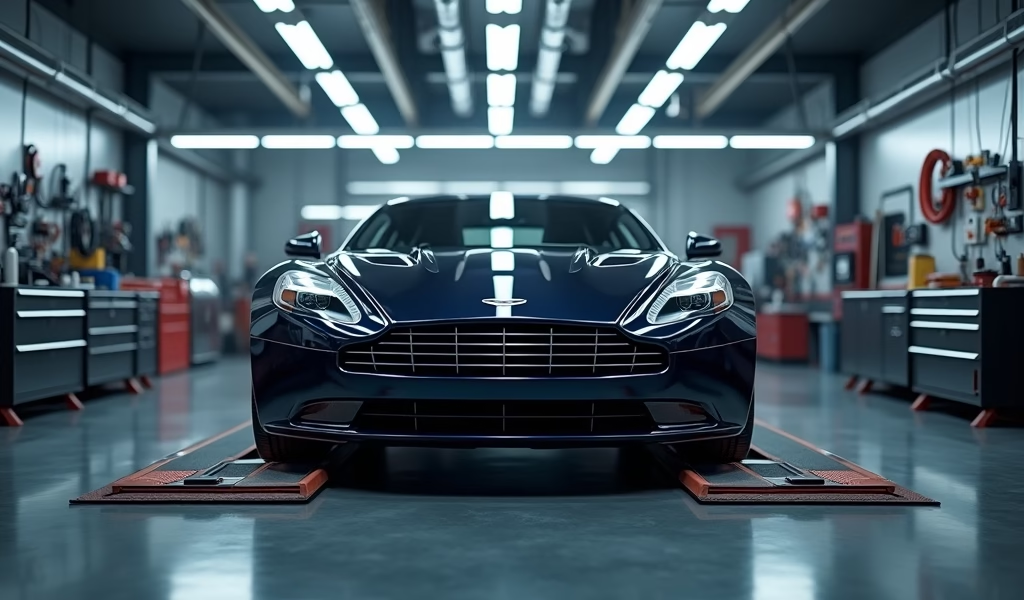Overview
This article presents seven essential maintenance secrets for used cars purchased from dealerships, including inspecting vehicle history reports, regular fluid checks, proper tire and battery maintenance, timely timing belt replacement, cooling system care, and scheduling professional inspections. Following these professional maintenance routines can prevent expensive repairs, extend vehicle lifespan, and significantly reduce the total cost of ownership.
Table of Contents
- Introduction to Car Dealer Used Cars
- Secret #1: Always Inspect the Vehicle History Report
- Secret #2: Check All Fluids Regularly
- Secret #3: Proper Tire Maintenance
- Secret #4: Battery Care and Maintenance
- Secret #5: Don’t Ignore the Timing Belt
- Secret #6: Cooling System Maintenance
- Secret #7: Schedule Regular Professional Inspections
- Conclusion
- Frequently Asked Questions
Introduction to Car Dealer Used Cars
Buying from car dealer used cars lots can be a smart financial move, but keeping that pre-owned vehicle running smoothly requires some insider knowledge. I’ve spent over two decades under the hood, and I’m here to share the professional-grade maintenance secrets that’ll keep your dealership purchase purring for years to come.
Unlike new vehicles, used cars come with their own unique history and wear patterns. That’s not necessarily a bad thing! A well-maintained used car can often provide better value than a new one that loses thousands in depreciation the moment you drive it off the lot. In fact, finding the right place to buy a used car is just the first step in a successful ownership experience.
What many buyers don’t realize is that dealership mechanics like myself often perform specific maintenance routines on trade-ins before they hit the lot. These professional care secrets can make a world of difference in extending your vehicle’s lifespan if you continue them after purchase. Let’s dive into the seven pro-level maintenance tips that’ll keep your dealership purchase running like new.
Secret #1: Always Inspect the Vehicle History Report
Before we get into the hands-on maintenance, there’s something crucial you need to understand: your car’s past informs its future care needs. I always tell customers that the vehicle history report isn’t just a pre-purchase tool—it’s your maintenance roadmap.
When you buy from a reputable dealer, they should provide a comprehensive history report like CarFax or AutoCheck. This document is gold for understanding your car’s unique needs. Look closely at:
- Previous accident records (this may indicate areas needing extra attention)
- Service history patterns (what’s been replaced or repaired already)
- Recall information (ensure all have been addressed)
- Mileage verification (confirms authentic odometer readings)
I recently worked with a customer who discovered their “new” used Honda had been in a minor front-end collision. This knowledge helped us pay special attention to the cooling system during maintenance, as radiator damage isn’t always apparent immediately after repairs. According to Consumer Reports’ guide on vehicle history reports, these documents can reveal potential problem areas that might not be visible during inspection.
Pro tip: Keep this report handy and reference it when planning maintenance schedules. If the previous owner replaced the timing belt at 85,000 miles and you’re now at 110,000, you’ve got valuable information about when that next major service might be due.

Secret #2: Check All Fluids Regularly
If there’s one thing I’ve learned from decades in the shop, it’s that fluid checks are your first line of defense against major problems. With car dealer used cars, this becomes even more critical since you don’t know the exact maintenance habits of previous owners.
Here’s what I check monthly on my own vehicles and recommend to all my clients:
- Engine oil: Not just the level, but the color and consistency. Clean oil should be amber and translucent. If it’s dark and opaque or smells burnt, you’re due for a change regardless of mileage.
- Transmission fluid: Often overlooked, but crucial. On most vehicles, check this with the engine running and warm. Clean transmission fluid should be pinkish-red, not brown or burnt-smelling.
- Coolant/antifreeze: Look for proper level and color. It should match your manufacturer’s specifications—usually green, orange, or pink depending on your vehicle.
- Brake fluid: This should be clear to slightly amber. If it’s dark or cloudy, it’s absorbed moisture and needs replacement.
- Power steering fluid: Often neglected until it causes problems. Check the reservoir for proper level and clarity.
I once had a customer who bought a seemingly pristine used Camry from a dealer. Everything looked great, but during our first service, I noticed the transmission fluid was dark and smelled burnt. We performed a transmission flush immediately, potentially saving them thousands in repair costs down the road.
Remember: Fluid maintenance is relatively inexpensive but can prevent catastrophically expensive repairs. This is especially true when finding the best way to buy a used car that may have unknown maintenance history.
Secret #3: Proper Tire Maintenance
Tires are literally where the rubber meets the road, and they tell me more about a car’s overall condition than most owners realize. When I inspect car dealer used cars, I can often tell how well the previous owner maintained the vehicle just by looking at the tire wear patterns.
Here’s what the pros check that you should too:
- Tire pressure: Check monthly and before long trips. The correct pressure is listed on the driver’s door jamb sticker, not on the tire itself.
- Tread depth: Use the penny test (insert a penny with Lincoln’s head upside down—if you can see all of his head, your tread is too worn).
- Wear patterns: Uneven wear across the tread surface indicates alignment issues. Inside or outside edge wear points to camber/toe problems.
- Age: Even with good tread, tires degrade over time. Check the four-digit code on your sidewall (e.g., 2419 means manufactured in the 24th week of 2019).
I always rotate my tires every 5,000-7,000 miles and recommend my customers do the same. It’s a simple service that can double your tire life. According to NHTSA data on tire safety, proper tire maintenance not only extends tire life but significantly improves safety and fuel economy.
A quick story: I had a customer bring in a used Mazda they’d purchased from a dealer just three months prior. The tires looked good at purchase, but they were experiencing pulling to one side. A quick inspection revealed the dealer had installed two different brands of tires—a common shortcut that saved them money but created handling problems. We corrected this with a matching set and proper alignment.
Secret #4: Battery Care and Maintenance
Battery issues are among the most common problems I see with recently purchased used cars from dealerships. Many dealers will install a new battery if the original is weak, but sometimes they’ll just clean the terminals and hope for the best. Either way, proper battery maintenance is essential for trouble-free operation.
Here’s my professional approach to battery care:
- Visually inspect: Look for corrosion on terminals (white or blue-green powder). Clean with a wire brush and baking soda solution if needed.
- Check connections: Ensure terminals are tight but not overtightened, which can damage the battery posts.
- Test voltage: A healthy battery should read 12.6V when fully charged and the engine off. While running, it should show 13.7-14.7V.
- Consider the climate: Extreme temperatures affect battery life dramatically. In very hot or cold regions, expect 3-4 years rather than 5-6 years of service.
For my customers in colder climates, I recommend a battery tender if the vehicle sits unused for extended periods. It’s a simple device that keeps the battery at optimal charge without overcharging.
Remember: Modern vehicles have numerous computer systems that maintain memory settings even when turned off. These small draws can deplete a marginal battery in just a week or two of sitting idle—something many used car buyers discover the hard way after their first vacation.

Secret #5: Don’t Ignore the Timing Belt
This is perhaps the most critical maintenance item that’s completely invisible to most car owners. Many car dealer used cars are sold right around the age when timing belt replacement becomes crucial, typically between 60,000-100,000 miles depending on the manufacturer.
Why is this so important? In “interference” engines (which most modern cars have), a timing belt failure means catastrophic engine damage—often resulting in repair bills exceeding the vehicle’s value.
Here’s what you need to know:
- Check your manual: Find out if your engine has a timing belt (not all do—some use timing chains that rarely need replacement).
- Know the replacement interval: This varies by manufacturer from 60,000 to 105,000 miles.
- Look for signs of replacement: Check service records or physical evidence that the belt has been replaced.
- Replace preventatively: Even if showing no visible wear, replace at the manufacturer’s recommended interval.
When I perform a timing belt replacement, I always replace the water pump simultaneously. Since the labor to access the timing belt is substantial, this is cost-effective preventative maintenance. Understanding these tips for buying a used car can save you from unexpected repair bills down the road.
I’ve seen numerous customers skip this service to save money, only to face engine replacement costs exceeding $4,000 just months later. As your mechanic friend, I’m begging you: Don’t gamble with the timing belt.
Secret #6: Cooling System Maintenance
Cooling system failures are among the top reasons otherwise good vehicles end up in the junkyard prematurely. When buying from car dealer used cars, the cooling system deserves special attention because it’s often neglected by previous owners.
Here’s my professional cooling system maintenance routine:
- Flush and replace coolant every 30,000-50,000 miles (or 5 years, whichever comes first).
- Inspect hoses for softness, cracks, or bulges—especially near clamp points.
- Check the radiator for external damage or leaks.
- Test the radiator cap’s pressure holding ability (a specialized tool your mechanic has).
- Ensure the cooling fans activate when the engine reaches operating temperature.
I recently worked on a Volkswagen purchased from a dealership that looked immaculate but had never had its cooling system serviced in its 8-year life. The coolant had degraded to the point where it was actually corroding the aluminum components internally. A simple $150 cooling system service would have prevented the $1,200 repair bill the customer ultimately faced.
According to Car Care Council’s research, cooling system failure is one of the primary causes of vehicle breakdowns and premature engine failure. Don’t be penny-wise and pound-foolish with this critical system.
Secret #7: Schedule Regular Professional Inspections
Even if you’re diligent about all the maintenance items we’ve discussed, there’s simply no substitute for a trained eye. As someone who’s spent decades diagnosing subtle issues before they become major problems, I strongly recommend establishing a relationship with a trustworthy mechanic for regular inspections.
Here’s what a professional inspection should include that most DIY enthusiasts miss:
- Suspension component assessment (ball joints, tie rods, bushings)
- Brake system evaluation beyond just pad thickness
- Exhaust system integrity check
- Computer diagnostic scan for pending codes (issues developing but not yet triggering warning lights)
- Drivetrain inspection (CV joints, differential condition)
I recommend scheduling a comprehensive inspection every 15,000 miles or annually, whichever comes first. This is especially important in the first year of ownership after purchasing from a dealership, as it establishes your baseline understanding of the vehicle’s condition.
This might sound like an unnecessary expense, but I’ve saved customers thousands by catching failing wheel bearings, subtle transmission issues, and developing engine problems before they caused roadside breakdowns or cascading damage.
Remember: The most expensive repairs are almost always the ones that could have been prevented with early detection.
Conclusion
When it comes to car dealer used cars, what separates a bargain from a money pit often isn’t the vehicle itself—it’s how you care for it after purchase. These seven professional maintenance secrets aren’t complicated or even particularly time-consuming, but they represent the difference between a vehicle that delivers years of reliable service and one that leaves you stranded.
By understanding your vehicle’s history, monitoring fluids regularly, maintaining tires properly, caring for your battery, respecting timing belt intervals, maintaining the cooling system, and scheduling professional inspections, you’re essentially following the same playbook that dealership techs use to keep their inventory in top shape.
Remember that preventative maintenance is always less expensive than repair. A $50 oil change is infinitely preferable to a $5,000 engine replacement. A $100 cooling system flush beats a $1,000 head gasket job. That $800 timing belt service is a bargain compared to a $4,000 engine rebuild.
Treat your dealership used car purchase with these professional-grade care routines, and you’ll likely enjoy many years and miles of trouble-free driving. Your vehicle will thank you with reliability, and your wallet will thank you with significantly lower lifetime ownership costs.
Frequently Asked Questions
Should I buy an extended warranty for my used car from the dealer?
It depends on the specific vehicle and warranty coverage offered. Research the vehicle’s reliability history and calculate potential repair costs versus warranty price before deciding.
How can I tell if a dealership has properly serviced a used car?
Ask for service records, look for inspection stickers under the hood, and have an independent mechanic inspect it before purchase. A comprehensive vehicle history report can also reveal maintenance patterns.
What’s the first maintenance I should do after buying from a dealer?
Schedule an oil change and comprehensive inspection within the first month, regardless of what the dealer claims was done. This gives you a true baseline of your vehicle’s condition.
Are certified pre-owned vehicles worth the extra cost?
Often yes, as they undergo more rigorous inspections and come with additional warranty coverage. The value depends on the specific manufacturer’s certification standards and what’s included.
How often should I service my dealership-purchased used car?
Follow the maintenance schedule in your owner’s manual, not the dealership’s recommendations. Most modern vehicles need oil changes every 5,000-7,500 miles and major service at 30,000-mile intervals.

